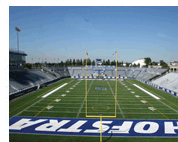A Little Business Talk With That Ballpark Frank
Now that we are in the middle of summer, the prominent sports talk around here is about baseball. (Okay, golf, too). While listening to all the baseball talk, I came to realize that so many common baseball expressions have been adapted by those of us in business. This probably goes all the way back in time to when the first pitch was thrown during an organized ballgame.
Here are just a few of the popular terms we use every day that I quickly jotted on my notepad –
- That came out of left field.
- Cover your bases.
- Give me a ballpark figure.
- Hit it out of the park!
- You’re batting 1,000.
- Step up to the plate.
I then wondered if the language of baseball — that lingo used by players and managers between the foul lines – had borrowed any words or terms from commerce. After a little digging, I quickly discovered that several expressions from America’s pastime can be traced to business.
- A “can of corn” refers to an easy catch of a fly ball by an outfielder.
During the 19th century, clerks at general stores were looking for an easy way to reach canned goods such as corn that had been stacked high on shelves. They used long sticks with hooks, pulling the cans from the shelves. They easily caught the cans in their aprons, similar to a fly ball nestling into a glove.
- When a player is in a difficult situation, such as a rundown between bases, he is caught in a “pickle.”
Shakespeare is thought to be the first to use the idiom “in a pickle” in The Tempest. But, in England, the meaning of the expression is different than our interpretation. “Pickle” refers to a food item similar to relish, and one who is “in a pickle” is “sauced” or “drunk.” On our side of the pond, to relate to our game of baseball, “in a pickle” did come from the food industry. It means “in a tough spot,” similar to a cucumber stuck sitting in vinegary brine for days.
- The term “butcher boy” refers to the strategy of a batter who draws in the infielders when he squares to bunt but then pulls back the bat to deliver a downward swing.
This term, if not the actual play, is attributed to legendary player and manager Casey Stengel. He was inspired by the motion a boy used in a butcher shop to cleave meat. Stengel ordered it whenever he wanted a player to hit a ground ball, especially when a runner was on third base during a close game and the team needed the run.
So, now that we have come to the end of this little “game,” I guess it is “safe” to say that baseball and business have “covered all the bases” for more than 150 years!









